#Emil Jellinek
Explore tagged Tumblr posts
Text
The History of Mercedes-Benz: The Very First Automobile in History
For this week Celebrity Story, instead of a person I choose to introduce you with the history of a celebrity brand for cars. I’m talking about Mercedes Benz. Here is its fascinating story full of unknown facts for most users of Mercedes Benz. Mercedes-Benz is one of the most famous car brands in the world. It is known for luxury, quality, and performance. But how did it all begin? Let’s take a…
#Automotive Excellence#Automotive History#Benz Celebrities#Benz Legacy#Benz Patent-Moterwagen#Bertha Benz#Beyoncé#C Class#Car Innovation#celebrities story#Cristiano Ronaldo#E-Class#electric vehicles#Emil Jellinek#EQS#Famous Cars#G Class#Gottlieb Daimler#Karl Benz#Kim Kardashian#Lewis Hamilton#Luxury Cars#Luxury Driving#Mercedes Evolution#Mercedes-Benz
0 notes
Note
17, 19, 28! <3
fic ask game
17. What's something you've learned about while doing research for a fic?
For my [redacted] wip, I learned about the history of the Mercedes family and their company as well as several colonial diamond mines in Africa. This was for the purpose of inventing fake history for the fic.
19. Give us a small teaser from one of your WIPs.
From the above [redacted] wip:
“The Mercedes Diamond,” says Nico. He clears his throat, “Le diamant Mercédès—” Seb snorts. “—is a forty-five carat fancy grey diamond with a single imperfection in the shape of a three-pointed star. It was mined in Namibia and cut for none other than Emil Jellinek, who had made a fortune selling automobiles to European aristocrats.”
“I’ve heard this story before,” says Seb, but Nico shushes him.
28. Have you ever tagged a fic "Dead Dove: Do Not Eat"?
Nope! I kind of can’t imagine myself ever writing something that would need the dead dove tag, but you never know! Especially since I’m currently puzzling over a hannibal au… (thinking about how I can justifiably sebcedes-ify it lol)
8 notes
·
View notes
Text

Mercedes-Benz
Alman otomotiv devi Mercedes-Benz, iki öncü mühendisin eseridir:
Karl Benz: 1886’da, eşi Bertha Benz’in desteğiyle “Benz Patent-Motorwagen” adlı ilk otomobili üretti. Bu icat, modern otomobilin doğuşunu simgeler.
Gottlieb Daimler: Aynı dönemde, benzinle çalışan motoru patentleyerek otomotiv teknolojisine katkı sağladı. Daimler-Motoren-Gesellschaft (DMG) şirketini kurarak sektörde önemli bir rol oynadı.
Bu iki şirket, 1926’da birleşerek Mercedes-Benz markasını oluşturdu. “Mercedes” ismi ise, Avusturyalı girişimci Emil Jellinek’in kızının adından gelmektedir. Jellinek, DMG’den satın aldığı araçlara kızının adını vermiş ve bu isim zamanla markanın resmi adı haline gelmiştir.
Ford Motor Company
Henry Ford: 30 Temmuz 1863’te doğan Amerikalı sanayici ve iş adamı Henry Ford, motor sanayisinde bilinen ve önde gelen bir isimdir. Ford Motor Company’nin kurucusu olan Henry Ford, seri üretim bandını kullanarak otomobilleri geniş kitlelere ulaştırmış ve endüstriyel üretimde devrim yaratmıştır.
Henry Ford, 1903 yılında Michigan, Detroit’te Ford Motor Company’yi kurdu. İlk olarak Model A’yı üreten şirket, 1908’de piyasaya sürdüğü Model T ile otomobil üretiminde devrim yarattı. Ford, montaj hattı tekniklerini kullanarak seri üretimi başlattı ve otomobilleri geniş kitleler için erişilebilir hale getirdi.
BMW (Bayerische Motoren Werke)
1916 yılında Karl Rapp ve Gustav Otto tarafından Almanya’da kurulan BMW, başlangıçta uçak motorları üretiyordu. 1923’te ilk motosikletleri R 32’yi piyasaya sürdüler. 1928’de otomobil üretimine başlayan BMW, zamanla dünyanın en prestijli otomobil markalarından biri haline geldi.
Audi
August Horch, 1899 yılında kendi soyadını taşıyan bir şirket kurdu ve ilk otomobilini üretti. Ancak, şirket içindeki anlaşmazlıklar nedeniyle ayrıldı ve 1909’da “Audi” markasını kurdu. “Audi”, Latince’de “dinle” anlamına gelir ve Horch’un Almanca soyadının çevirisidir.
Aston Martin
0 notes
Text
Mercedes-Benz is a German luxury automobile brand renowned for its innovation, quality, and prestige:
As one of the oldest and most respected automakers in the world, Mercedes-Benz has consistently set the standard for automotive excellence. From its early days as a pioneering company in the automotive industry to its current position as a leader in luxury, performance, and technology, Mercedes-Benz continues to define what it means to drive in style and sophistication.
1. History and Origins of Mercedes-Benz
Mercedes-Benz traces its roots to the late 19th century. The brand was born from the collaboration of two visionary engineers, Carl Benz and Gottlieb Daimler, who are often credited with inventing the modern automobile.
Carl Benz built the first practical automobile, the Benz Patent-Motorwagen, in 1885, securing the patent for the first-ever gas-powered vehicle.
Gottlieb Daimler and Wilhelm Maybach developed a similar engine and vehicle design and founded the company Daimler-Motoren-Gesellschaft (DMG) in 1890.
The name Mercedes comes from the daughter of Emil Jellinek, an influential Daimler dealer, who helped drive the brand’s early success. In 1926, Daimler-Motoren-Gesellschaft merged with Benz & Cie, creating the brand Mercedes-Benz, combining the names of these two automotive pioneers.
2. The Legacy of Innovation
Mercedes-Benz is synonymous with cutting-edge innovation and is often the first automaker to introduce new technologies and safety features. Some of the brand’s most notable innovations include:
Safety Features: Mercedes-Benz has long been a pioneer in automotive safety. In the 1950s, it introduced the safety cage, or "safety cell," in its vehicles. In 1981, the company debuted ABS (Anti-lock Braking System), followed by the Airbag system in the early 1990s. Mercedes has also introduced Pre-Safe technology, which prepares the car for an impending crash by tightening the seatbelts, adjusting headrests, and closing windows.
Direct Injection and Hybrid Technology: Mercedes-Benz has been at the forefront of eco-friendly technology, offering innovations like direct-injection engines, hybrid models, and fully electric vehicles. The company’s EQ sub-brand is dedicated to fully electric vehicles, such as the EQS, a luxury electric sedan that combines cutting-edge performance with sustainability.
Autonomous Driving and AI: Mercedes-Benz has made strides toward autonomous driving. The company’s Drive Pilot system allows for semi-autonomous driving in certain conditions, while the company continues to research fully autonomous vehicles.
3. Iconic Models
Mercedes-Benz has a diverse lineup of vehicles, ranging from compact cars to high-performance sports cars, luxurious sedans, and rugged SUVs. Some of the most iconic and popular models include:
Mercedes-Benz S-Class: Known as the pinnacle of luxury, the S-Class sedan is celebrated for its cutting-edge technology, opulent interior, and exceptional driving comfort. It's often seen as a benchmark in the luxury sedan segment.
Mercedes-Benz E-Class: A mid-sized luxury sedan, the E-Class strikes the perfect balance between performance, comfort, and style. The E-Class has also been available in coupe, convertible, and wagon configurations.
Mercedes-Benz C-Class: A compact luxury sedan and one of the brand’s best-sellers, the C-Class offers a more affordable entry point into the Mercedes-Benz lineup, while still maintaining high levels of refinement and performance.
Mercedes-Benz GLC and GLE: The GLC and GLE are part of the brand’s luxury SUV lineup. The GLC is a compact SUV, while the GLE is a mid-sized SUV that offers more space and performance options, including powerful AMG variants.
Mercedes-Benz G-Class (G-Wagon): One of the most iconic luxury SUVs in the world, the G-Class has a distinctive boxy design and offers unparalleled off-road capability while maintaining a high level of luxury and performance.
Mercedes-Benz A-Class: A smaller, entry-level model that introduced Mercedes-Benz's premium offerings to a younger, more global audience. The A-Class is available as both a hatchback and a sedan.
Mercedes-AMG Performance Models: Mercedes-Benz’s AMG division produces high-performance models, such as the AMG GT, AMG C 63, and AMG E 63. These cars are designed for enthusiasts who demand both power and precision handling, and they often come with hand-built engines.
4. The Mercedes-AMG Performance Division
Mercedes-Benz’s AMG division is responsible for its high-performance vehicles. These cars are the epitome of speed, agility, and luxury, with specialized engineering and hand-crafted engines that take driving performance to another level. Some of the most notable AMG models include:
AMG GT: A stunning two-door sports car known for its dynamic handling, striking design, and powerful V8 engines. It represents the ultimate in Mercedes-Benz’s performance-oriented offerings.
AMG C 63: A high-performance version of the C-Class, with a twin-turbocharged V8 engine and extreme levels of handling and acceleration.
AMG E 63: A luxury sedan that combines comfort with mind-blowing performance, offering breathtaking speed and a thrilling driving experience.
AMG models feature bespoke suspension systems, aggressive styling, and performance tuning that sets them apart from standard Mercedes-Benz vehicles.
5. Electric Future: The EQ Series
Mercedes-Benz is pushing towards an all-electric future with its EQ lineup. The EQ brand represents the company’s commitment to sustainable mobility while retaining the luxury and performance for which Mercedes-Benz is known. Some important models include:
Mercedes-Benz EQS: A fully electric luxury sedan that rivals the S-Class in terms of technology, comfort, and performance. The EQS is one of the brand's most technologically advanced vehicles, featuring cutting-edge AI, a massive curved display, and exceptional driving range.
Mercedes-Benz EQB and EQC: Compact and mid-sized electric SUVs, respectively, offering electric alternatives to the GLA and GLC models, with all the luxury and utility Mercedes-Benz customers expect.
Mercedes-Benz plans to become fully electric by 2030, with a significant portion of its lineup being electrified or fully electric, aiming to reduce CO2 emissions across its fleet.
6. Luxury, Comfort, and Interior Excellence
Mercedes-Benz vehicles are known for their high-end interiors, which combine premium materials, sophisticated designs, and advanced technology. The company is a pioneer in creating cabins that offer both comfort and cutting-edge technology. Features like MBUX (Mercedes-Benz User Experience) infotainment system, multicontour seats, and massaging seats elevate the in-car experience. Ambient lighting, leather upholstery, and high-end materials ensure that Mercedes-Benz cars offer the utmost luxury.
7. Motorsport and Performance Heritage
Mercedes-Benz has a rich motorsport heritage, having competed successfully in Formula 1, endurance racing, and touring car championships. Mercedes has won multiple Formula 1 World Championships with its team, Mercedes-AMG Petronas Formula One Team, and it has been home to legendary drivers such as Lewis Hamilton.
The brand’s motorsport division also influences the performance tuning found in its road cars, ensuring that each vehicle benefits from the brand’s racing expertise.
8. Sustainability and the Future
Mercedes-Benz is fully committed to sustainability and reducing its environmental impact. The company is investing heavily in electric vehicles, renewable energy, and sustainable production methods. The aim is to achieve carbon-neutral production by 2039 and to have a completely electrified vehicle lineup within the next decade.
In addition, Mercedes-Benz continues to explore alternative fuel sources, hydrogen fuel-cell technology, and green manufacturing practices to further reduce the environmental footprint of its vehicles.
Conclusion
Mercedes-Benz represents the epitome of luxury, performance, and innovation in the automotive industry. With its long history of engineering excellence, cutting-edge technology, and commitment to sustainability, Mercedes-Benz continues to shape the future of the automobile. Whether through the opulence of the S-Class, the thrill of an AMG, or the sustainability of the EQ electric lineup, Mercedes-Benz remains a leader in defining what the automotive future looks like. With a focus on precision, comfort, and performance, Mercedes-Benz has earned its place as one of the most prestigious car brands in the world.
1 note
·
View note
Text
Mercedes-Benz history

Mercedes-Benz is a name that immediately brings to mind luxury and top-tier automobiles. When one of these cars passes by, it captures everyone’s attention. For a lot of us, this vehicle has come to represent our ideal car.
But have you ever been curious about how this legendary brand got its name? Are you someone searching for that answer too? Recently, Mercedes-Benz CEO Ola Källenius revealed a fascinating backstory. The famous automotive manufacturer’s name has a story behind it, which the CEO shares.
Where Did the Name Mercedes Come From?
The creator and engineer did not take the moniker “Mercedes,” according to a social media video that has gone viral. In the video, Källenius disclosed that a little child named Mercédès Jellinek is the true source of the name “Mercedes,” not a founder or engineer.
Who Was Mercédès Jellinek?
Mercédès Jellinek was the daughter of Emil Jellinek, an Austrian industrialist and avid racing enthusiast.
What Does Mercedes-Benz Mean?
The name Mercedes-Benz combines Mercédès Jellinek’s name with that of Karl Benz.
When Was the Name Mercedes Trademarked?
The “Mercedes” name was officially trademarked in 1902.Read More-https://voiceofentrepreneur.life/
0 notes
Text
and in Europe:
Carlo Abarth Herbert Austin W. O. Bentley Carl Benz Ettore Bugatti André Citroën Gottlieb Daimler Battista "Pinin" Farina Enzo Ferrari James Alexander Holden (Australian saddlery in 1856) August Horch (horch meaning "listen" becomes audi in Latin) Mercédès Jellinek (daughter of Emil Jellinek) Christian von Koenigsegg Ferruccio Lamborghini Vincenzo Lancia Lionel Martin (raced at Aston Hill) Alfieri, Bindo, Carlo, Ettore, and Ernesto Maserati Wilhelm Maybach Bruce McLaren William Morris Adam Opel Armand Peugeot Ferdinand Porsche Louis Renault Nicola Romeo Charles Rolls and Henry Royce Emil von Škoda
Japan:
Soichiro Honda Michio Suzuki Kiichiro Toyoda (sic)
China:
He Xiaopeng (XPeng)
India:
Jamshedji Tata (formed a trading company in 1868)
people with American car companies named after them:
David Dunbar Buick Antoine de la Mothe Cadillac (French explorer, founder of Detroit!) Arthur and Louis Chevrolet Walter Chrysler John DeLorean Horace and John Dodge Fred and August Duesenberg Henry Ford Max and Morris Grabowsky (GMC, Grabowsky Motor Company) Abraham Lincoln (yes the president with the tall hat) Ransom E. Olds Peter Studebaker (German wagonmaker in the 1800s) Nikola Tesla (twice!) Preston Tucker
31 notes
·
View notes
Text
Origin of car brands name
Czech Republic
Škoda (Central Bohemian Region): after company owner Emil Škoda. The Czech last name means something like “Too bad!”.
France
Citroën (Île-de-France): after its founder, André Citroën, whose ancestors were Dutch fruit sellers and initially called themselves Limoenman, which later became Citroën (lemon).
Peugeot (Bourgogne-Franche-Comté): after its founder, Armand Peugeot.
Renault (Île-de-France): after its founders, Louis, Fernand and Marcel Renault. The word comes from the Germanic name Raginwald (ragin = council, wald = that rules).
Germany
Audi (Saxony): after its founder, August Horch, whose last name was translated into Latin and means “Listen!”.
BMW (Bavaria): It stands for Bayerische Motoren Werke (Bavarian Motor Works).
Mercedes-Benz (Baden-Württemberg): after Daimler Motors Corporation dealer Emil Jellinek, who drove race cars under the name Mercedes (based on the name of his daughter, Mercédès). Mercedes comes from the Spanish merced (grace) and Benz comes from the founder of the company Benz & Cie., which was merged with Daimler. Benz is an affectionate form of Berthold or Bernhard, or an ancestry designation from the town of Benz.
Opel (Hesse): after its founder Adam Opel. Opel arose from the name Albrecht or Adalbert.
Porsche (Baden-Württemberg): after its founder Ferdinand Porsche. Porsche is either derived from the Slavic name Borislav (boru = battle, slava = glory) or from the Czech word bureš (farmer).
Trabant (Saxony): It was actually not a brand, but a model series produced by former car manufacturer VEB Sachsenring (S in the logo). The word Trabant means “satellite/companion” and was based on the Russian satellite Sputnik (with the same meaning), which was built around the same time.
Volkswagen (Lower Saxony): according to Hitler’s wish, who wanted a car for the general public. The name literally means “people’s car”.
Wartburg (Thuringia): It was actually not a brand, but a model series from the manufacturer Automobilwerk Eisenach, where the Wartburg castle is also located. I’ve been there!
Italy
Ferrari (Emilia-Romagna): after its founder, Enzo Ferrari, whose last name means “smith”.
Fiat (Piedmont): short for “Fabbrica Italiana Automobili Torino” (Italian Automobiles Factory, Turin).
Lamborghini (Emilia-Romagna): after its founder, Ferrucio Lamborghini, who was a Taurus (hence the logo).
Japan
Honda (Shizuoka Prefecture): after its founder, Sōichirō Honda. The last name Honda means something like “main field”.
Lexus (Aichi Prefecture): artificial word, whose meaning is not clearly clarified. It is said to stand for luxury and elegance.
Mazda (Hiroshima Prefecture): inspired by the name of the creator god Ahura Mazda and by the similar-sounding name of the company’s founder Jujiro Matsuda.
Mitsubishi (Tokyo Prefecture): means “three rhombi” and describes the logo, which goes back to the family coat of arms of the founder, Iwasaki Yatarō.
Nissan (Kanagawa Prefecture): originally an abbreviation of Nihon Sangyō (Japan Industries).
Subaru (Tokyo Prefecture): The original company was partially reunited after a temporary split. This is reflected in the name: Subaru is the Japanese name of the star cluster of the Pleiades and translated also means something like “to be united”.
Suzuki (Shizuoka Prefecture): after its founder, Michio Suzuki. The second most common last name in Japan means “bell tree”.
Toyota (Aichi Prefecture): Based on the founder Kiichiro Toyoda, who wanted to separate his private and his business life by changing -d- to -t-.
Romania
Dacia (Argeș County): reminds of Romania’s past as the Roman province Dacia.
Russia
Lada (Samara Oblast): Russian for “dearest”. The similar-sounding word ладья (lad’ya) is also the name of a medieval sailing boat widespread in Russia that was used to sail the Volga, which flows through the Tolyatti production site.
South Korea
Hyundai (Seoul): means “modern”.
Kia (Seoul): Korean 起 (ki) means “to arise” and 亞 (a) means “Asia”.
Spain
SEAT (Catalonia): short for “Sociedad Española de Automóviles de Turismo” (Spanish Society of Passenger Cars).
Sweden
Saab (Västra Götaland County): stands for “Svenska Aeroplan Aktiebolag” (Swedish Airplane Company Limited).
Volvo (Västra Götaland County): Latin for “I roll”.
Switzerland
Smart (Bern): It stands for “Swatch Mercedes Art (style)” and recalls the origins of the micro-car.
United Kingdom
Jaguar (West Midlands): The name of the sidecar manufacturer Swallow Sidecars was changed to SS Cars in 1934 because of a dispute and again in 1945 in view of the Nazi crimes to Jaguar, which already existed in 1935 under the model name “SS Jaguar 100”.
United States
Cadillac (Michigan): in honor of Detroit’s founder, French officer Antoine de la Mothe Cadillac. The logo is based on his family’s coat of arms.
Chevrolet (Michigan): after its founder, Louis Chevrolet.
Chrysler (Michigan): after its founder, Walter Chrysler.
Ford (Michigan): after its founder, Henry Ford, whose last name comes from German Furt (river crossing).
Jeep (Ohio): The origin of the word is not known. The brand could have been named after Eugene the Jeep, the pet of comic book character Popeye that had supernatural strength, or could derive from GP (for instance “General Purpose”).
Lincoln (Michigan): in honor of Abraham Lincoln, for whom founder Henry Leland voted.
Tesla (California): in honor of physicist Nikola Tesla.
107 notes
·
View notes
Text
Mercedes
JPGCars https://www.jpgcars.com/mercedes/41952
Mercedes
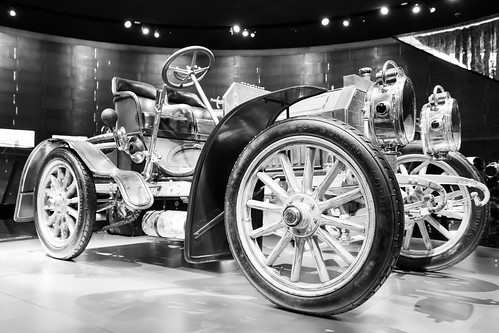

Mercedes Benz Museum
0 notes
Video
tumblr
“Did you know it all started with a girl? Back in 1901, Emil Jellinek named our car after his daughter, Mercedes – forever dedicating us to the next generation.” Kanith Thailamthong worked with @mercedesbenzusa to create this lovely new animation.
#day of the girl#mercedes#animation#kanith thailamthong#debut art#illustration#whimsical#i am mercedes#international day of the girl
4 notes
·
View notes
Photo

Luxury car and yacht: the family of Emil Jellinek in 1914 with their Mercedes-Simplex 60 hp touring car (center) in the port of Nice on their steam yacht "Mercédés II".
105 notes
·
View notes
Text


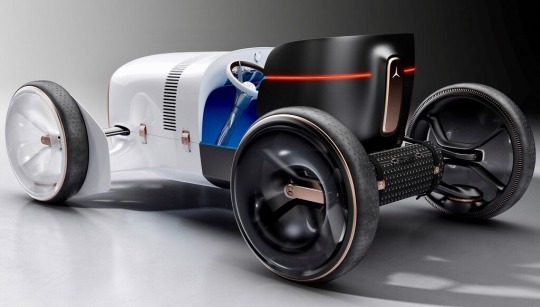
Mercedes-Benz Vision Simplex Concept, 2019. Presented by Mercedes-Benz Design at Design Essentials 2019, a concept that references the earliest origins of the brand.
“In spring 1901 the history of mobility changed radically. At Race Week in Nice a car the like of which the world had never seen appeared on the starting line: a high-performance car which Daimler-Motoren-Gesellschaft had developed at the suggestion of the visionary Emil Jellinek. The designs which were the norm back then were still closely related to motorised carriages. The Mercedes 35 PS, named after Jellinek's daughter Mercedes, appeared with a completely new vehicle architecture and dominated the competitions in Race Week, which took place on the famous racetrack from Nice to La Turbie, right at the heart of what is now the Mercedes-Benz International Design Center Europe near Nice. The design is acknowledged as the first modern car and it heralded in a new era. Nearly 120 years ago the transformation, away from a high motorised carriage to a flat vehicle design with a light high-performance engine installed low down in the frame and a honeycomb radiator organically integrated into the front, was the pioneer of success and role model for all the cars that were to follow, whatever the brand. The vehicle layout presented for the first time over a century ago remains to this day the technical basis of all cars.”
#mercedes-benz#concept#design study#retro style#1901 2019#Mercedes-Benz Vision Simplex Concept#Mercedes-Benz Design#Nice
210 notes
·
View notes
Text
Sabe porque é que a Mercedes se chama… “Mercedes”?

Com cerca de 120 anos de história, a marca da estrela tem também na sua génese algumas curiosidades interessantes. A origem do seu nome é uma delas. Sabe porque é que a Mercedes se chama… “Mercedes”?
A resposta da origem do nome “Mercedes” é, afinal, simples e tem uma explicação que, provavelmente, o deixará embebecido. Há 120 anos, a 2 de abril de 1900, a Daimler-Motoren-Gesellschaft decidiu chamar aos seus automóveis de Mercédès, em homenagem à filha de Emil Jellinek, um destacado pioneiro no desenvolvimento da tecnologia automóvel, que colocava à prova os veículos Daimler de alto desempenho, em diversas competições da Côte D’Azur, sob o pseudónimo “Monsieur Mercedes”.

Ora, de “Monsieur Mercedes” até “Mercédès” foi um pequeno (mas ternurento) passo, que havia de ficar na história do automóvel, da mesma forma que a menina de onze anos (nascida em 1899), filha de Jellinek, também viu, para sempre, o seu nome ligado à primeira marca de viaturas de luxo em todo o mundo.
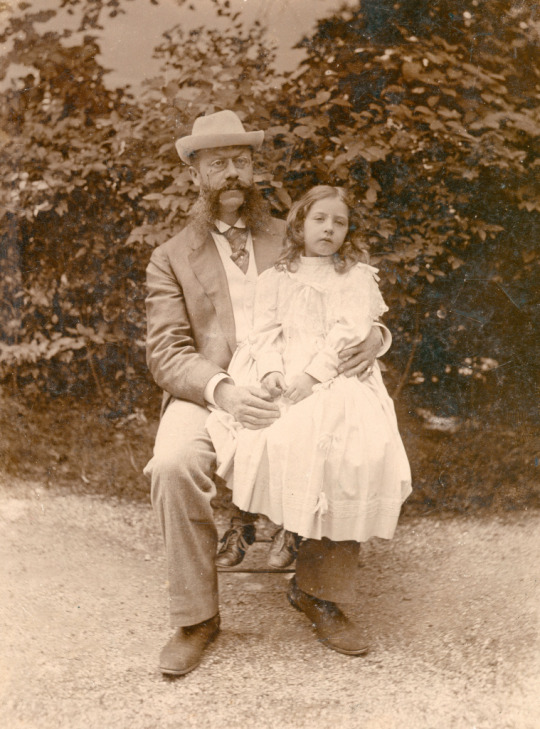
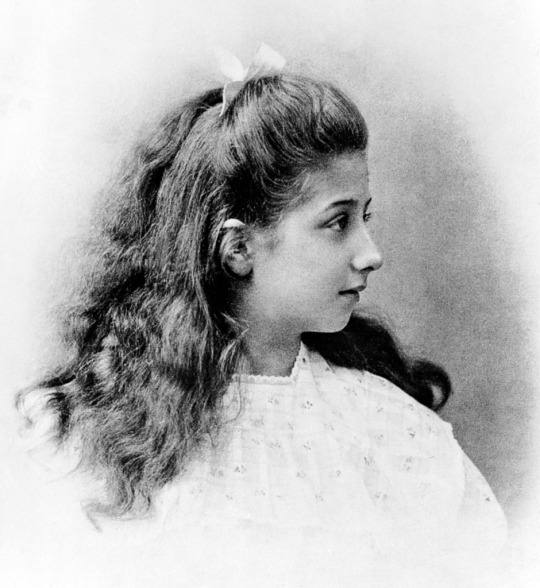
Desde então, as letras curvas "Mercédès" passaram a adornar os radiadores dos automóveis de passageiros Daimler. Entrando na “máquina do tempo”, verificamos que o primeiro veículo com um melodioso nome em espanhol - o Mercedes 35 PS - causou sensação na semana de Nice em março de 1901. Tal deveu-se não apenas à sua tecnologia altamente avançada - permitindo que ele vencesse várias corridas - mas também porque o seu design era extremamente elegante. O Mercedes 35 cv é considerado o protótipo do automóvel moderno e, com a sua arquitetura progressiva, tornou-se um modelo para toda a indústria automóvel. Paul Meyan, então secretário-geral do Automobile Club of France, disse após a semana da corrida: "Entramos na Era da Mercedes".

Estava dado o mote e o nome “Mercedes” foi registado como marca comercial a 23 de junho de 1902, tendo sido depois alterado para Mercedes-Benz após a fusão das empresas Daimler e Benz em junho de 1926. A Mercedes-Benz sabe, desde a sua origem, combinar beleza e elegância com desempenho e tecnologia. Além disso, o segredo do atual sucesso do design da Mercedes-Benz é também a combinação de inteligência e emoção.
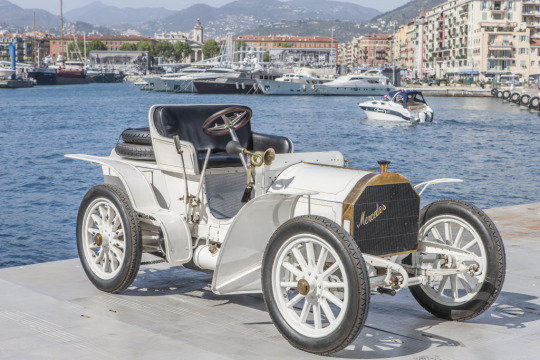
A única marca automóvel com nome feminino
Até ao momento, a Mercedes-Benz é a única marca automóvel no mundo com um nome feminino. Com a iniciativa She’s Mercedes, criada em 2015, a Mercedes-Benz está a construir uma tradição para as inúmeras clientes do sexo feminino.

Desde 2016, a Mercedes-Benz tem sido consistentemente a marca de automóveis de luxo mais valiosa do mundo e é a única marca europeia entre as 10 melhores no ranking "Melhores Marcas Globais 2019" da Interbrand, a conceituada empresa de consultoria de marcas dos EUA.
1 note
·
View note
Text
Origen de los logotipos de coches
Origen de los logotipos de coches
Origen de los logotipos de coches
Existen gran cantidad de marcas de vehículos con logotipos muy conocidos y entre ellos podemos destacar:
Mercedes y las tres puntas de su estrella
Mercedes Benz puede presumir de ser la marca de automóviles más antigua del mundo pues su primer automóvil fue fabricado por Gottlieb Daimler en el año 1885, y fue capaz de crear un motor de combustión…
View On WordPress
#AUDI#AUGUST HORCH#BMW#COCHES#EMIL JELLINEK#ENZO FERRARI#FERRARI#FRANCESCO BARRACA#FRANZ JOSEF POPP#GOTTLIER DAIMLER#HISTORIA#INSÓLITO#LOGOTIPOS#MERCEDES
0 notes
Text
What is the Mercedes-Benz Name Meaning?
The Mercedes-Benz name is a combination of two names: Mercedes Jellinek and Karl Benz. Originally, Mercedes-Benz was founded by Karl Benz and Gottlieb Wilhelm Daimler and was part of Daimler Motoren Gesellschaft, better known as DMG. The company was first known by the name Daimler-Benz, as an homage to the founders.
After Gottlieb Wilhelm Daimler passed away, entrepreneur and racing enthusiast Emil Jellinek was brought on by chief engineer Wilhelm Maybach. Emil went on to help create the Mercedes 35hp in 1900. Jellinek named the new cars after his daughter, Mercédès Jellinek, whose Spanish name translated to “mercy.” The company later went on to have the “Mercedes” name trademarked 1902. While the company continued to trade as Daimler-Benz, the car line began to carry the Mercedes-Benz name.
0 notes
Text
Первый современный автомобиль. Мерседес 35 НР
Первый современный автомобиль. Мерседес 35 НР
Mercedes 35 HP: The First Modern Car The Mercedes 35 HP was a radical early car model designed in 1901 by Wilhelm Maybach and Paul Daimler, for Emil Jellinek. Produced in Stuttgart, Germany, by Daimler-Motoren-Gesellschaft (DMG), it began the Mercedes line of cars (since 1926 re-branded Mercedes-Benz). Its name is derived from the power of the car, 35 Pferdestärken (26 kW, approximately 35…

View On WordPress
0 notes